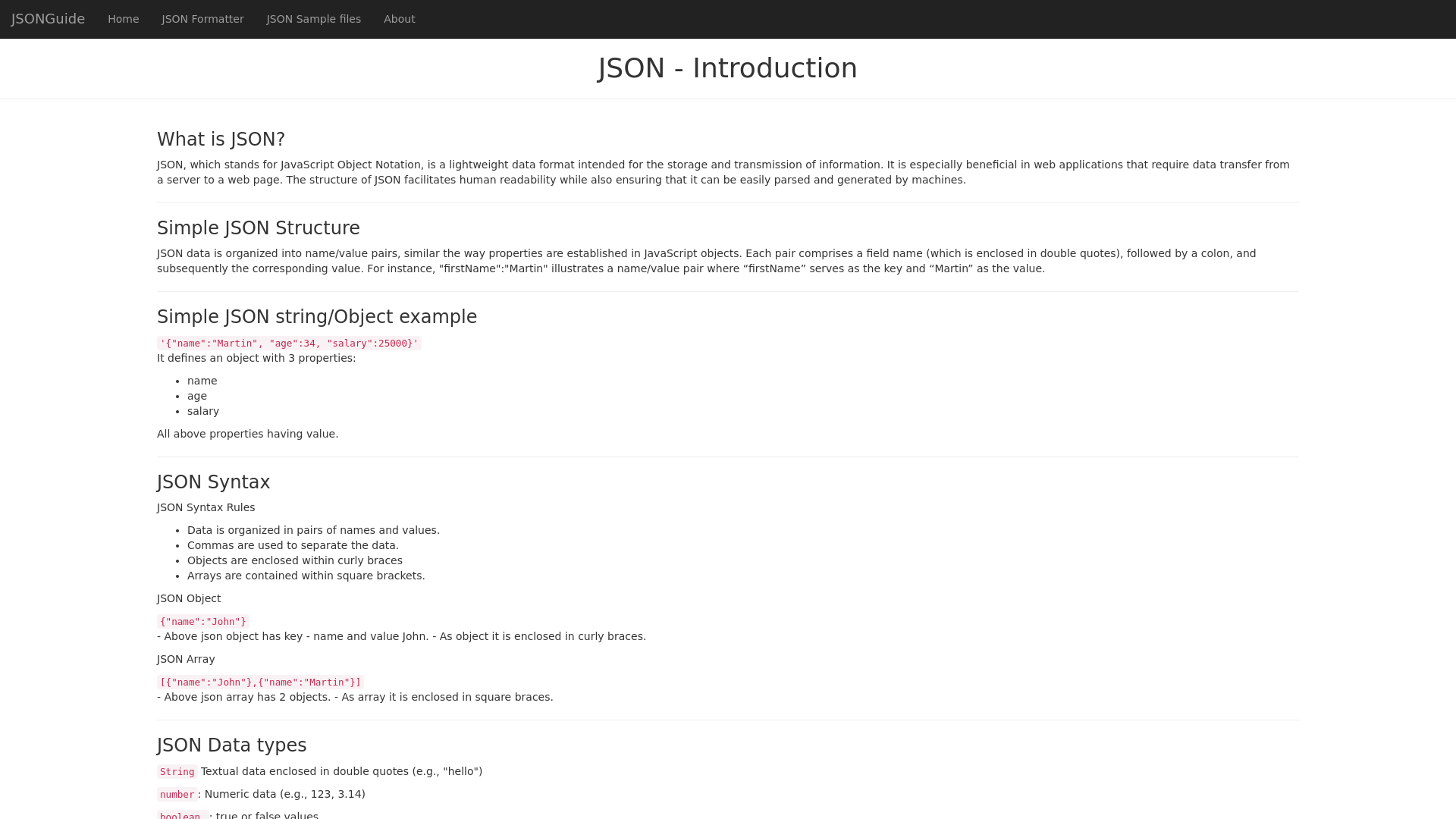JSON Introduction
JSON Introduction
Ai-Detector Visit JSON Introduction
Visit JSON IntroductionJSON, which stands for JavaScript Object Notation, is a lightweight data interchange format designed for efficient information transfer and storage. Particularly important in web applications, JSON enables easy data transfer between a server and a web page. Its simple format promotes human readability while ensuring compatibility for machine parsing and generation. To use JSON, you need to follow its syntax rules, which include organizing data in name/value pairs, using commas to separate data, and enclosing objects in curly braces while arrays are noted with square brackets. Here's a simple step-by-step guide: JSON itself is a free data format – no costs are associated with its use. However, tools and libraries that help you work with JSON may vary in price, with many free options widely available in different programming ecosystems. JSON supports several basic data types, including: JSON is usually more lightweight and easier to read than XML. JSON uses a simpler syntax and is specifically designed for data interchange in web applications, while XML is more verbose and supports more complex document structures. Yes, JSON allows for nested objects and arrays, enabling representation of complex data structures easily within its format. While JSON itself is secure, always ensure that you implement HTTPS to encrypt the data transfer between clients and servers for additional security. Additionally, implement secure data handling practices against potential security threats.



